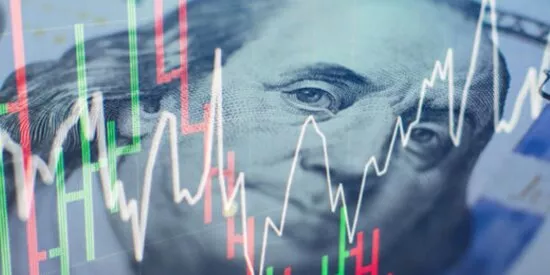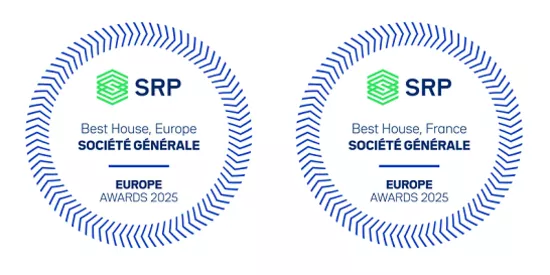
The consequences of recovery scenarios across asset classes
In their latest SG Market Risk Outlook report, and with the pandemic dominating almost everything and introducing an overwhelming risk to the economy of a medical rather than economic nature, our economists and analysts’ detail three recovery scenarios: (1) the base-case economic outlook (conviction level of 55%), where the shape of the recovery resembles a tilted V; (2) the downside (30%), which sees an L-shaped recovery; and (3) the upside (15%), which envisions a V-shaped recovery. Following these scenarios, our strategists present forecasts for each scenario for each asset class.
 The base case – Gradual normalisation with minor setbacks
The base case – Gradual normalisation with minor setbacks
We put the probability of our base case at 55%. In our base case, the lockdowns are gradually eased but social-distancing measures are retained for many months. New cases continue to run at very low rates in Europe (where the corner appears to have been turned) and in the US (where new cases continue to run at a far lower rate compared to the peak). In Asia Pacific, the situation is expected to remain as it is currently, meaning very few new cases (and a sharp improvement in Singapore). Latin America should gradually improve over the coming weeks and months. Some local flare-ups are part of this scenario, but overall, we do not expect renewed widespread, let alone blanket, lockdowns.
In this scenario, most economies would experience a short-term bounce in activity after a slump in 2Q, in what can be described as an incomplete V-shaped recovery as economic activity would still be well below pre-crisis levels. Following this sharp rebound, growth would successively slow in quarterly sequential terms, so that even by 2022 output would remain below the pre-crisis trend. This part of the recovery could also be described as more L-shaped.
In this base-case scenario, our equity strategists see European equities having strong upside potential. Their Eurostoxx 50 2Q21 forecast is 3,550, or 12% above the current value. They see the US market following suit, with the S&P 500 trading in the 3,100-3,500 range for the rest of the year. This would reflect a gradual, orderly exit from lockdown, paving the way for a tilted V-shaped recovery in 2021. Our US-based rates strategists see the 10y Treasury yield at 1.20% by 2Q21 in the base-case scenario.
In credit, for European investment grade, our strategists see a continued recovery in spreads to 120bp by 2Q21 from 144bp, in part driven by expansionary fiscal policy giving support to credit spreads. In FX space, the strategists see a very modest bullish outlook for the euro. They feel it is more likely that the Fed will be more willing to stick to easy monetary policy in a recovery than the ECB, though that’s marginal. Our EM strategists see EM FX down 6% before the end of 2020 but recovering somewhat to being down 4% by 2Q21 in the base-case scenario. Historically, EM currencies perform well when global growth momentum is improving and poorly when it is weakening. Lastly, in commodities, our strategists suggest that oil prices should grind higher towards $50/bbl by end-2021.
Downside – A second COVID-19 wave
We think of the downside scenario as one in which there are serious setbacks in unlocking economies and getting activity going again because of increases in cases, i.e. the dreaded second wave. However, we make the assumption that a second wave would develop very quickly, as it turns out that the opening-up of economies leads to a renewed surge in severe coronavirus cases. We believe this is a more likely scenario, given that COVID-19 has, unlike seasonal flu, not exhibited vulnerability to warm weather. But we claim no expertise in making this call. We ascribe a 30% probability to this scenario.
Our economists’ downside scenario sees some differentiation among US equities, with the Russell 2000 (840 downside vs 1,450 base case) underperforming the S&P 500 (2,100 downside vs 3,300 base case). In the downside scenario, our U.S rates strategists see the 10yT remaining in the 0.75-1% range but not revisiting the historical low. Our Euro rates strategists take the economists’ base-case outlook for the economic recovery (tilted V) and forecast the 10y Bund at 0.15% by 2Q21, up from -0.40% now. The powerful policy response to the COVID-19 recession makes the low-for-long scenario for EUR rates a little less “low”.
The yen is the big FX winner in a downside scenario that likely hurts risk sentiment and increases speculation of negative rates in the US. In this scenario, USD/JPY is seen at 97 by 2Q21. GBP/USD is 1.30 in the base-case forecast and 1.39 in a V-shaped recovery. On the downside, EM FX is down 13% by end-2020 before recovering slightly to -8% in 2Q21. An L-shaped downside recovery would be bearish for the oil markets. Brent would plummet to $25/bbl by the start of 2021, and touch prices would move below $20/bbl in 2021. The L-shaped scenario (upside) would be very bullish for gold. Further economic damage would push average gold prices up to $2,200/oz in 1Q21 and badly shake the financial markets.
Upside – Effective treatment or, better yet, a vaccine
The upside scenario would materialise if an effective treatment for COVID-19 were to be found within a relatively short timeframe, say in 3Q of this year. This would not change the prospects for 2Q from our base case, but it would allow a slightly stronger recovery in 3Q and a much stronger one beyond then than in our base case. But people would still act in a way that would reduce the risk of infection, albeit less so than without an effective treatment, so social distancing and avoidance of activities that involve large groups of people in confined spaces would still be prevalent. We ascribe a 15% probability to this scenario.
Evaluating the upside scenario of a V-shaped recovery, our equity analysts, using their earnings sensitivity models, see more upside in Asian equity markets, with China the clear winner. They also point to eurozone small and mid-caps as offering a great way to leverage portfolios to a sharp rebound in PMIs and massive ECB liquidity injections. The upside scenario sees the VIX trading below 22 and possibly as low as 12%. In their upside forecasts, US rates strategists think the 10yT yield could rise to 1.20% by year-end and 1.75% by mid-2021 if growth surprises to the upside relative to baseline forecasts. A second wave of COVID-19 curbing the recovery path would destroy the risk-on mood and likely lead to expectations of more ECB asset purchases, driving the 10y Bund down in the range of -0.50%.
An upside scenario might leave global risk sentiment less dependent on extraordinarily easy monetary policy. However, that would justify USD/JPY close to current levels (106) rather than any further gains. On the upside, the average EM 10y bond yield rises 30bp to 2Q21 compared to current levels. Again, a downside growth surprise and higher EM yields might appear counterintuitive, but in this scenario currencies should weaken significantly and put upward pressure on yields in many countries (mostly high yielders), similar to in March. In the upside scenario, they expect a faster recovery in demand of +3mb/d in 2H20 and +2mb/d in 2021. They project Brent prices closer to $50/bbl by end-2020 and closer to $70/bbl in 2Q21.
If you are an existing client, click here for direct access to the report
Find out more about our independent research
About Societe Generale Cross-Asset Research
Societe Generale Cross-Asset Research is composed of more than 200 Analysts, Strategists, Economists and Quant, combining their expertise into ‘Research-based’ and innovative solutions suited to client’ needs: fundamental studies and expert views, investment ideas and long-term strategies, trade ideas and tactical baskets, thematic and systematic indices, quant solutions. On top of its established UK and Western European base, Societe Generale Cross-Asset Research benefits from a global coverage thanks to its presence in the US and in Asia (Hong Kong, Singapore, Tokyo and Bangalore) and Societe Generale local networks in Eastern Europe.
Disclaimer
This editorial contains financial analysis which reflects the opinion of the Cross-Asset Research department of Societe Generale at the date of its publication. It does not necessarily reflect the views of the other departments of Societe Generale nor the official opinion of Societe Generale. This interview is dedicated to institutional and professional investors and is not deemed to be seen and used by retail investors for investment purpose. The viewers shall consult their own financial advisers to make their own appraisal.



